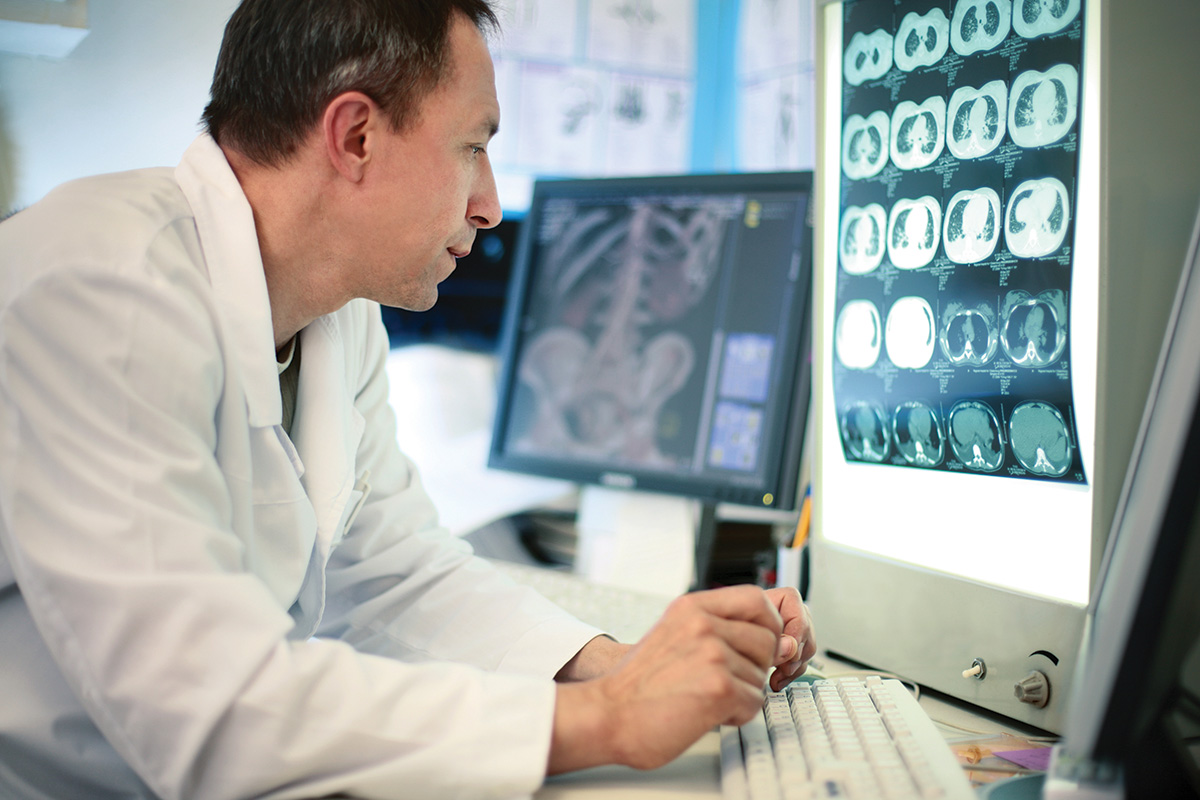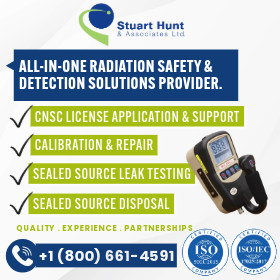CRPA Dose and Image Working Group to Improve Radiation Safety Culture in Health Care / Le groupe de travail Dose et image de l’ACRP pour améliorer la culture de radioprotection dans les soins de santé

A year has passed by since the CRPA conference in Saskatoon and the creation of the Dose and Image (D&I) working group.
In Quebec, it is maple sugar season . . . this natural sugar with innumerable virtues. Although there is a lot of talk these days about the dangers of refined sugar, any gourmet would tell you that maple sugar has nothing to do with refined sugar. Nonetheless, we should heed the warning of Paracelsus (sometimes called the “father” of toxicology): “All things are poison and nothing is without poison; only the dose makes a thing not a poison.”
Dose to patients would be very much in line with Paracelsus’ saying, and the CRPA D&I working group could be the spokesperson. CRPA represents a Canadian network of radiation protection specialists who are accustomed to collaborating with various organizations at all levels, and several CRPA members have expertise to share with regard to dose and medical imaging.
We will take things one step at a time. The D&I working group will begin by contributing to the Bonn Call for Action issued by the International Atomic Energy Agency (IAEA) and World Health Organization (WHO) in 2012, and we will add CRPA’s voice to the international choir of professional organizations concerned with this challenge. Last December, attendees at the IAEA International Conference on Radiation Protection in Medicine concluded that, in addition to the effective implementation of a regulatory framework, more training and awareness of radiation protection were necessary to better protect patients and health workers from unnecessary exposure to radiation due to medical procedures.
Medical ionizing radiation is the largest source of artificial radiation for the public, and its use is increasingly going beyond the traditional medical imaging department. The number of exams continues to grow. The technology is evolving, becoming more complex. These diagnostic and intervention tools help provide better care for our patients, our families, and our friends, but, as with all things, we must know how to dose.
Regarding the workers, we have progressed far beyond the era of the pioneering dentist C. Edmund Kells, who developed the dental X-ray. After 20 years of practice, he lost fingers, a hand, an arm, and eventually his life! However, there are always risks for workers from uncontrolled exposures. Work and studies are underway, standards and regulations are changing, practices need to improve, and CRPA members can help.
IAEA and WHO have proposed 10 concrete actions (see related story here), and we can help implement some of them not only in our respective institutions, but also more widely by sharing our knowledge, experiences, and questions.
Numerous International Commission on Radiological Protection (ICRP) publications will inform our discussions, including the most recent ones: Occupational Radiological Protection in Interventional Procedures (Publication 139), Ethical Foundations of the System of Radiological Protection (Publication 138), and Diagnostic Reference Levels in Medical Imaging (Publication 135). As CRPA members, we have free access to these publications. The working group will also be looking at experiences reported in other publications and real-life examples shared among our peers.
To launch the D&I working group, our first activity will be a workshop during the 2018 CRPA conference. Please join us!
Une année s’est écoulée depuis le congrès de l’ACRP de Saskatoon et la formation d’un groupe de travail Dose et image (D et I).
Au Québec, c’est le temps des sucres et les érables laissent couler leur sucre naturel « aux mille vertus ». Même s’il y a beaucoup à dire de nos jours sur les dangers du sucre raffiné, n’importe quel gastronome vous dira que le sucre d’érable n’a rien à voir avec le sucre raffiné. Cependant, nous devons tenir compte de l’avertissement de Paracelse (connu aussi comme le père de la toxicologie) : « Tout est poison et rien n’est sans poison; la dose seule fait que quelque chose n’est pas un poison ».
La dose aux patients pourrait très bien suivre cette citation, et le groupe de travail D et I de l’ACRP pourrait en être le porte-parole. L’ACRP représente un réseau canadien de spécialistes en radioprotection, des spécialistes habitués à collaborer avec diverses organisations à tous les niveaux, et plusieurs membres de l’ACRP ont de l’expertise à partager en termes de dose et d’imagerie médicale.
Petit à petit, le groupe de travail D et I pourra contribuer à l’Appel à l’action de Bonn (en anglais) lancé en 2012 par l’Agence internationale de l’énergie atomique (AIEA) et l’Organisation mondiale de la santé (OMS), puis ajouter sa voix à une chorale qui commence à s’organiser. À ce sujet, en décembre dernier, les participants à la Conférence internationale de l’AIEA sur la protection radiologique en médecine (en anglais) ont conclu que, malgré l’implantation efficace d’un cadre réglementaire, il faudra plus de formations et de sensibilisation à la radioprotection pour mieux protéger les patients et les travailleurs de la santé des expositions inutiles aux rayonnements causées par les procédures médicales.
Pour le public, les rayonnements ionisants du domaine médical sont la plus grande source de rayonnement artificiel, et leur utilisation sort de plus en plus des départements d’imagerie médicale traditionnels. Le nombre d’examens médicaux ne cesse de croître. La technologie évolue, se complexifie. Ces outils de diagnostic et d’intervention permettent d’offrir de meilleurs soins à nos patients, à nos familles, à nos amis, mais comme pour toute chose, il faut savoir doser.
En ce qui concerne les travailleurs, nous sommes bien loin de l’époque du dentiste C. Edmund Kells, qui a fini par perdre des doigts, une main, un bras, puis sa vie après 20 ans de pratique! Toutefois, pour nos travailleurs, il existe toujours des risques provenant d’expositions non contrôlées. Des travaux et des études sont en cours, les normes et règlements changent, les pratiques doivent s’améliorer et les membres de l’ACRP peuvent contribuer.
L’AIEA et l’OMS ont proposé 10 actions concrètes (voir l’article ici) et nous pouvons en réaliser quelques-unes, non seulement dans nos institutions respectives, mais aussi plus largement en partageant nos connaissances, nos expériences et nos questionnements.
Pour soutenir nos échanges, il y a les nombreuses publications de la Commission internationale de protection radiologique (CIPR), dont les plus récentes : Occupational Radiological Protection in Interventional Procedures (Publication 139), Ethical Foundations of the System of Radiological Protection (Publication 138) et Diagnostic Reference Levels in Medical Imaging (Publication 135). À titre de membre de l’ACRP, nous avons accès à ces documents. Le groupe de travail évaluera aussi l’expérience relatée dans d’autres publications, de même que des exemples de faits vécus partagés par nos pairs.
Pour lancer le groupe de travail D et I, une première activité est prévue, soit un atelier pendant le congrès 2018 de l’ACRP. Joignez-vous à nous!
 Manon Rouleau
Manon Rouleau
Manon Rouleau is a perfecting and passionate professional and a pioneer in radiation protection of patients in Quebec. She strives to improve knowledge and practices in the radiation protection industry. She has 25 years of experience in radiation protection, including more than 15 years in medical imaging. She was the interim director of the Public Health Laboratory of Quebec and is currently vice-president, operations and quality control, at Radioprotection Inc. She has been involved with CRPA for 20 years.
Manon Rouleau est une professionnelle rigoureuse et passionnée ainsi qu’une pionnière dans la radioprotection des patients au Québec. Ses objectifs : contribuer à l’amélioration des connaissances et des pratiques en radioprotection. Elle compte 25 ans d’expérience en radioprotection, dont plus de 15 ans en imagerie médicale. Elle a été directrice par intérim du Centre d’expertise clinique en radioprotection du Québec et est actuellement vice-présidente, opération et contrôle de qualité chez Radioprotection Inc. Elle s’implique à l’ACRP depuis 20 ans.


 Manon Rouleau
Manon Rouleau

